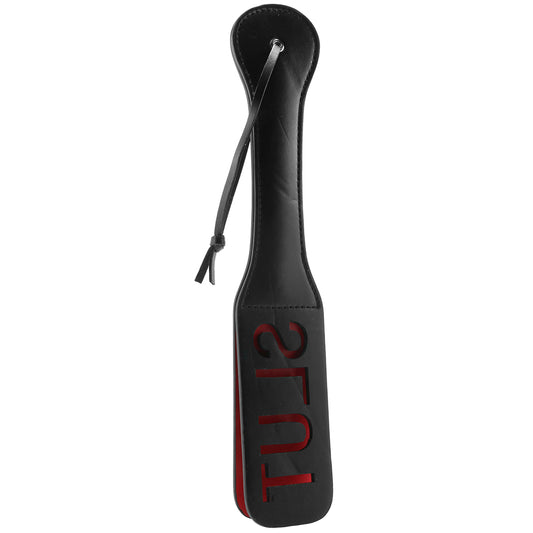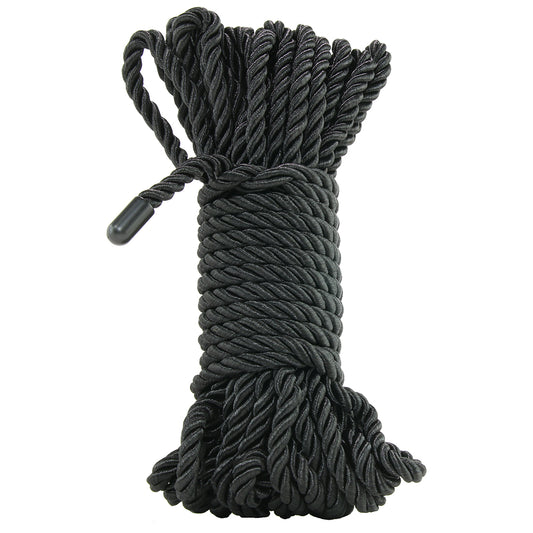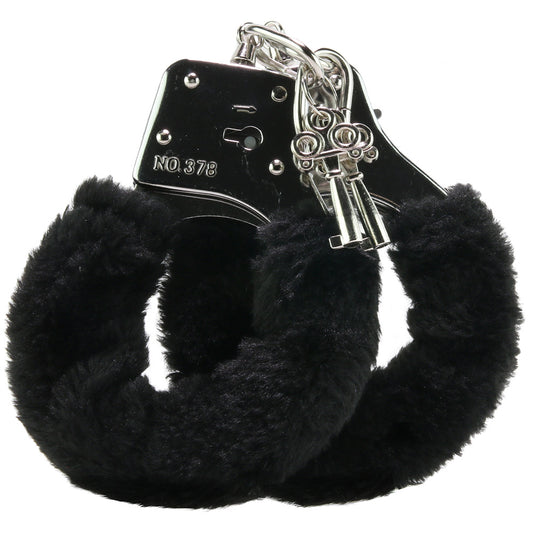
Looking for some potent sexual healing? If your sex life could use a bit (or a lot) more excitement, BDSM might be just the tool. When you’re looking to kick things up a notch, play-wise, taking healthy emotional risks is a pretty surefire way to get there.
If you’re into the idea of having power and control over another person — or you find the idea of being completely powerless and helpless to the whims of someone else scintillating — BDSM might be just the thing. Who knows? It could even satiate that side of you that needs a little power play here and there (or everywhere?).
What is BDSM?
BDSM stands for a couple of different things all at the same time. Depending on who you ask or what you’re exploring, it can stand for: Bondage and Submission [BDSM], Dominance and Submission B[DS]M, and sadism and masochism or sadomasochism BD[SM].
BDSM has a whole subculture, and any decent-sized city will have its own version and flavor of a BDSM community. This usually includes group events like workshops, as well as professional “dungeons,” which are places where you can go to participate in BDSM “scenes.”
Never heard of a scene? According to Kinkly, “A BDSM scene is often compared to a story or a play because it represents a sort of creative expression for the participants. They take on a dominant role or submissive role. While these roles may be based on their personalities, their dominant or submissive characteristics are often heightened for the scene. Participants may also role-play, taking on roles such as a police officer and criminal, a doctor and patient, or a teacher and student. In these scenarios, one person has a naturally dominant role over the other, more submissive partner.”
Dungeons are also places where kinksters can enact their desires in smaller, bite-sized BDSM scenes, which including pre-negotiation (what are we doing in this scene, what are our safe words, what are the limits, etc.), all the great dominant/submissive action fun time, and then wind down and aftercare. Dungeons are also useful if you don’t want to have all that kinky funky furniture in your house ;).
Like most communities, BDSM and kinksters also have a bunch of accessible online forums, such as Fetlife, as well as private local Facebook groups, and perhaps even their own dating apps (Looking at you, Feeld).
Beyond the social meetups, there are also weekend-long conventions like Dom Con, dedicated to kink, kink gear, community gathering, and education. At these types of events, you can find specialty manufacturers that make kink-specific clothing and implements, as well as educational seminars, such as a workshop on spanking. Because who doesn’t want to know how to spank in a way that causes a deep, satisfying thud sensation versus a more surface-level sting sensation (generally known as a thuddy vs. stingy impact)? Very important spanking knowledge.
Not all kinksters partake in the BDSM community side of things, but having a group of like-minded people that understand non-standard relationships and dynamics can be helpful if you’re just getting into ropes or swings or all kinds of things. If you’re not the type to entwine your BDSM activities with a social group and you just want to learn information solo, there are also plenty of blogs and videos that you can read to dip your toe into the ocean of BDSM knowledge out there.
In addition, there are now plenty of scientific organizations looking at the finer characteristics of BDSM, such as the Journal of Sexual Medicine. Related articles include, Are Role and Gender Related to Sexual Function and Satisfaction in Men and Women Practicing BDSM? and Between Pleasure and Pain: A Pilot Study on the Biological Mechanisms Associated With BDSM Interactions in Dominants and Submissives.
How does it work?
BDSM is built around the concept of mutual trust and consent. A Dom, or dominant partner, trusts the Sub, or submissive partner, to convey whether or not they’re still having a good time. Also, the Sub trusts the Dom to work within the framework they have both created together. Sometimes this framework shows up in the form of written agreements, and other times it shows up as brief but thorough discussions of likes, dislikes, limits, and hard no’s prior to engaging in some sort of BDSM activity.
Unlike E L James’ portrayal of BDSM in 50 Shades of Grey, BDSM should never be an abusive dynamic. Says the author of the Atlantic article on the topic, “As several experienced BDSM practitioners emphasized to me, there are healthy, ethical ways to consensually combine sex and pain. All of them require self-knowledge, communication skills, and emotional maturity in order to make sex safe and mutually gratifying. The problem is that Fifty Shades casually associates hot sex with violence, but without any of this context. Sometimes, Ana says yes to sex she’s uncomfortable with because she’s too shy to speak her mind or because she’s afraid of losing Christian; she gives consent when he wants to inflict pain, yet that doesn’t prevent her from being harmed.”
By contrast, BDSM done well is a trust-based activity that can be a part of a relationship and involve sex, but not all participants in the BDSM lifestyle consider BDSM to be a sexual practice. For some, it’s more about allowing someone else to take total control and let go of the need to manage or know or be in charge.
Really, anything can be exciting in the range of human sexuality, but if you’re just into BDSM for the power play dynamic, there’s nothing wrong with you. You don’t have to have any mental disorders to enjoy the BDSM lifestyle, and you’re not crazy for liking kink/BDSM. The same goes for if you enjoy practicing BDSM in the scope of your sexual activity. You’re not broken for liking BDSM sex, and don’t let over-nosey people say otherwise.
What are safe words?
Have you ever had a friend with whom you could shoot a quick directed look, or issue a small catchphrase that was riddled with meaning? A safe word is kind of like that — it’s a shorthand way to convey something very specific, usually along the lines of “Whatever’s going on is out of bounds and I’m done with this.” A safe word is usually a unique word or phrase, like “panda bear” so that it’s not used in the rest of the scene.
Sometimes safe words can be a bit more elaborate, and consist of a scaled level of needs to let everyone know that the current level of BDSM debauchery is on the up-and-up and everything’s OK. Enter the Traffic Light System:
What is the traffic light system?
In BDSM, ensuring that every party is enthusiastically consenting to whatever is going on is of utmost importance. The point of the whole experience is to do depraved things between consenting adults. If one adult is no longer consenting, then it’s just cruel, single-directional torture.
Having a way to display you or your partner’s enthusiastic consent during BDSM is key to making the experience safe, so creating a system of communication prior to the event makes the whole thing smoother. One simple system for checking on consent is the traffic light system. Put simply, it’s saying or indicating either Green, Yellow, or Red, and having everyone involved instantly know what that means.
The nice thing about it is that it’s quite intuitive:
- Green means Go! Everything is OK. Whatever is going on is within the Sub’s limits and expectations.
- Yellow means Let’s Check In. Something is amiss. Maybe your Sub is uncomfortable in a clearly not intentional way, such as if a rope is tied too tight around their wrist and cutting off circulation. No bueno, easy fix, then everyone can get back to delightful debauchery.
- Red means Done, Stop, No More. Whatever is going on needs to come to an immediate and safe close. The Sub wasn’t feeling it anymore and all the pain and discomfort inflicting actions needs to be over. If applicable, now would be a good time to commence aftercare.
What types of BDSM are there?
As with any type of activity, there’s a range of activity and levels of intensity that all fit within the BDSM umbrella. Here’s a quick overview of the types of activities that could be included. Bear in mind that this is an incomplete list:
Discipline
This isn’t an action specifically, but it is a BDSM practice that can come about between the more dominant role partner and the more submissive role partner. Discipline is where the dom and sub(s) participate in rules that everyone agrees to, and punishment can be given if those rules aren’t followed.
Disciplining the sub is part of the routine in this style, doling out punishments for things like talking out of turn - wondering what is a ball gag, ? find about it here - or not referring to the dom properly (for example, some doms like to be called Sir or Madam). Other forms of BDSM can be included in the discipline.
One dynamic that can come about inside the umbrella of discipline is a “bratty sub”, or a sub that enjoys misbehaving or breaking the rules so that they receive punishment (which they very very much enjoy).
Bondage
This is likely the most easily recognized category of BDSM. Bondage is the act of restraining someone’s movements. Bondate can be done in many different ways (sounds fun, right?), but some of the most common are rope bondage, also known as Shibari, or using pre-built restraints like leather wrist and leg cuffs or a collar.
Handcuffs are also in this category, but they’re not recommended to newer BDSM practitioners because of their ability to cause actual harm from their hardness against the body or from losing a key and not being able to get unwound or unbound from something. You really don’t want to have to break out an angle grinder or metal clippers if you can help it – definitely not sexy.
Impact play
Impact play is the act of hitting someone with something. This can be something like whips, or hard wood or leather paddles. Doms can get very creative with what to use for a quick and fun spanking or flogging session, ranging from something as simple as a palm or open hand, to a wooden dinner spoon for a quick disciplinary upgrade before dinner … or dessert.
Sensory control
Sensation play is a part of a BDSM experience that involves the five senses: hearing, seeing, feeling, smelling, or tasting. Sensory play frequently involves removing sight or hearing from the equation. It can be something as simple as a Sub wearing an eye mask, ear plugs, or some sort of gag or mask. This can become part of the BDSM relationship or routine, with the Dom controlling what the sub can hear or convey. Important note: if there’s any sort of activity that limits the sub’s ability to convey consent, there needs to be a protocol in place to let everyone know that they’re all still on board.
Another element of sensory control is what’s called orgasm denial or forced orgasms. This kind of thing can be achieved by affixing a chastity cage or vibrating adult sex toys to a sub’s body and keeping them oh-so-close to that orgasmic edge, or crossing that edge entirely but forcing the sub to remain in overt sexual pleasure by not letting the sub turn off said sex toy. Devious! Just be sure to read our chastity cage guide if you do intend to use it and use a lot of personal lubricant.
If you’re curious about what kind of BDSM you might be into, you can take a handy dandy BDSM test to get a scope of your desires. This can help you get an idea of what types of BDSM you may like and whether you want those things included in a sexual relationship. You might also like to throw this into your kinky online dating profile!
Ultimately, BDSM play is about having fun and enjoying different aspects of yourself. It can certainly be edgy and enthusiastic consent is always the goal, so make sure to check in with yourself at every stage. If you’re not a fan of bondage sex, for example, you don’t need to partake in it, and it doesn’t need to be a part of your sex life regardless of what a significant other wants. Always take care of your mental health and sexual health first before leaning into the desires of someone else.
That said, this arena of sexuality can be one of the hottest and most connected there is. Or in the words of Shayne McClendon of Always the Good Girl:
"She's the one tied to the bed, yet everything she gives to me ... her willing submission to my Dominance, her immersion in the pleasure I provide, her complete trust in my protection ... keeps me bound with ties far stronger than physical. She is my submissive. She completes me.”







